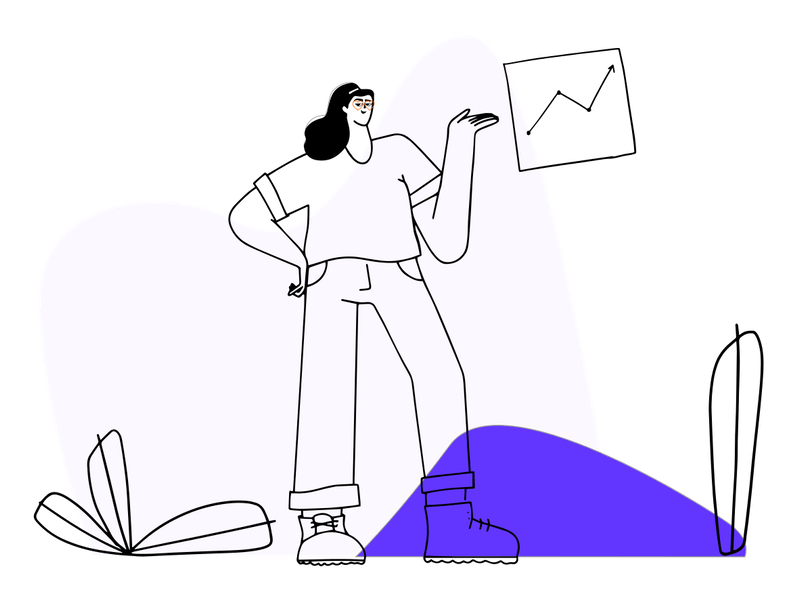The fundamental distinction between visual thinking and design thinking is that design thinking is a strategy for solutions to problems while visual thinking is the arrangement of tools that can make critical solutions or thoughts more understandable by envisioning them.
It’s normal for individuals to think they mean the same thing, yet it’s essential to understand the subtle differences. While these two unique perspectives can cooperate, they’re both successful for very different reasons and are intended to be applied in different circumstances.
In this article, we will define both visual and design thinking and explain the similarities and differences between the two.
What is Visual Thinking?
Visual thinking is the process of visualizing information to gain a better understanding of it. This is frequently portrayed as a progression of pictures, diagrams, or templates to visualize data. Almost 60% of individuals learn best through representations, and for these sorts of learners, a picture or diagram can yield essential learning opportunities that surpass those of written words.
Visual thinking alludes to a way for learners to externalize their internal thought processes, making their contributions more expressive and significant. It can likewise be a method for getting thoughts onto paper in a more efficient manner, helping people get involved in unique ways.
Drawing on whiteboards, paper, flowcharts, or using other diagrams are the common methods used in visual thinking. These strategies help provide clarity to the elements you present with the goal being a greater level of understanding for your team.
Learn more: What Is Visual Thinking?
What is Design Thinking?
Design thinking is a non-direct, iterative cycle that groups or teams use to get clients, challenge suppositions, reclassify issues, and make inventive answers. It includes five stages that are generally valuable to handle issues that are not well characterized or obscure.
The design thinking process consists of the following 5 stages:
- Empathize: Design in light of your client. Don’t simply think about what they need but try and understand what they are thinking. Try to meet with them and ask questions to clarify. Comprehend their concerns by getting to know your clients and expanding your understanding of their needs.
- Define the problem: Utilize the data collected from the clients to understand the problem that needs to be fixed. The problem needs to be defined in very specific terms in order to develop a clear understanding of how it will be fixed.
- Ideate: Conceptualize thoughts that can fix the issue you recognized. Record each thought regardless of how enormous, little, complex, or straightforward so you can completely investigate all choices and focus on the right arrangement.
- Prototype: In the wake of settling on a couple of extraordinary arrangements, assemble a few prototypes, take a gander at the usefulness and stream, and figure out which arrangement you should investigate.
- Test: Discharge your best answer for further extensive testing. This phenomenon is rehashed as regularly as required. It’s a non-straight, iterative process you could have to hop from the testing stage back to the characterizing stage or anyplace in the middle. You might need to go through much emphasis before you discharge an answer that functions admirably for a great many people.
Learn more: What is Design Thinking?
The Difference Between Visual Thinking and Design Thinking
Both the terms are sometimes used interchangeably but definitely, they are not the same concept. These are the main differences between these two terms:
- Design thinking is a problem-solving phenomenon while visual thinking is a set of tools that makes complex ideas visible.
- Design thinking is linked with training while visual thinking is the phenomenon of supporting design thinking.
- Visual thinking is a way to ideate and can be applied to a ton of different exercises while design thinking is more of a workflow that attaches itself to a specific project.
- Visual thinking can be implemented at any stage of a project while design thinking is a method that is used throughout.
Conclusion
While visual thinking and design thinking are both common terms, in reality, they are very different. If you want to learn more about the advantages of implementing visual thinking make sure you stay tuned to the IdeaScale Whiteboard blog.
Most Recent Posts
Explore the latest innovation insights and trends with our recent blog posts.













